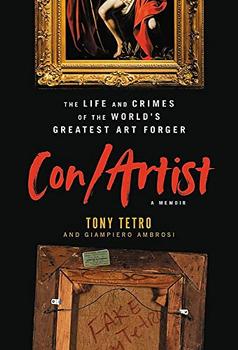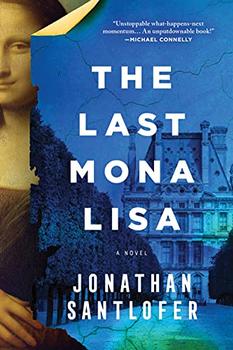Summary | Excerpt | Reading Guide | Reviews | Beyond the book | Read-Alikes | Genres & Themes | Author Bio

A True Story of Art, Thieves, and the Hunt for a Missing Masterpiece
by Edward DolnickIf you thought the world of classical art was full of boring people discussing paintings in hushed pseudo-intellectual voices, then it's about time you took
some time out to meet Charley Hill, a
former Scotland Yard undercover officer and
Fulbright scholar, now a freelance detective
who has made recovering stolen art treasures
his life's work. Now almost 60
years old, he has a convivial face framed by
spectacles and curly brown hair and is able
to talk with art world academics and the
criminal fraternity on equal terms.
Before serving in the Metropolitan Police
for 20 years he was a paratrooper in Vietnam
(his father was a US Air Force officer, his
mother English); at university he studied
history and theology and claims the 17th and
18th centuries as his favorite periods for
art; His wife is the niece of
Ireland's most famous living painter,
Louis le Brocquy, and he loves his work,
saying "It's the only thing I'm interested
in. I'll do it till I drop."
His finds to date include Goya's Dona
Antonia Zarate (stolen from a house in
Ireland) and Titian's Rest on the Flight
to Egypt (stolen from Longleat House in
Wiltshire, England), Jean-Baptiste Oudry's
The White Duck (stolen from Hougton
Hall in Norfolk, England), Vermeer's Lady
Writing a Letter with her Maid,
and, of course, The Scream. In
an interview with the Telegraph Newspaper in
2002 he explained that he left the police
force because art crime had become too big,
too international and too specialized for a
local police force ("Specialization lost
favor five or six years ago and has never
returned") and increased levels of
bureaucracy left his team with little
flexibility; plus the expense of running a
dedicated art and antiques squad was leading
to his team being cut further and further.
He says that leaving the police has given
him more freedom to follow his own interests
in his own way, he says, "I'm more
interested in recovering the art than
capturing the criminals."
As you can imagine, Hill has scant regard
for the petty regulations that might get in
the way of him doing his job - like many a fictional cop (except that he's the real thing), he's not going to let the
pedantic letter of the law stand in the way
of practicality when it comes to tracking
down the stolen wares - indeed the whole
chase is something of a game for him.
The author intersperses tales of other art
heists and Hill's time in Vietnam in with
the main thread of the story. Some
reviewers found these digressions too
frequent and too distracting, but others,
recognizing that Dolnick's intention was to
write a bigger story than that of just one
theft, felt that these side-stories added
depth to the whole, transmogrifying The
Rescue Artist into a treatise on art
theft in general, not just one incident.
Importantly, Dolnick blows apart any image we might have of art thieves
being the gentlemen of their trade stealing
to order for reclusive collectors - he
paints the thieves as no better or worse
than any other thieves - apparently they choose to
steal art simply because they can - it's valuable and, even in museums,
it's relatively unguarded.
Selected Reviews
"Outstanding...fascinating, expertly
told, with characters as crisply-drawn as
any Rembrandt, and ... intrigue." - Arthur
Golden, author of
Memoirs of a Geisha.
"The Rescue Artist is a masterpiece.
Engrossing, entertaining, often surreally
hilarious." - Mary Roach, author of
Stiff.
![]() This review was originally published in The BookBrowse Review in August 2005, and has been updated for the
August 2006 edition.
Click here to go to this issue.
This review was originally published in The BookBrowse Review in August 2005, and has been updated for the
August 2006 edition.
Click here to go to this issue.

If you liked The Rescue Artist, try these:

by Tony Tetro, Giampiero Ambrosi
Published 2022
The world's most renowned art forger reveals the secrets behind his decades of painting like the masters - exposing an art world that is far more corrupt than we ever knew while providing an art history lesson wrapped in sex, drugs, and Caravaggio.

by Jonathan Santlofer
Published 2021
A gripping novel exploring the Mona Lisa's very real theft in 1911 and the present underbelly of the art world, The Last Mona Lisa is a suspenseful tale, tapping into our universal fascination with da Vinci's enigma, why people are driven to possess certain works of art, and our fascination with the authentic and the fake.
Your guide toexceptional books
BookBrowse seeks out and recommends the best in contemporary fiction and nonfiction—books that not only engage and entertain but also deepen our understanding of ourselves and the world around us.